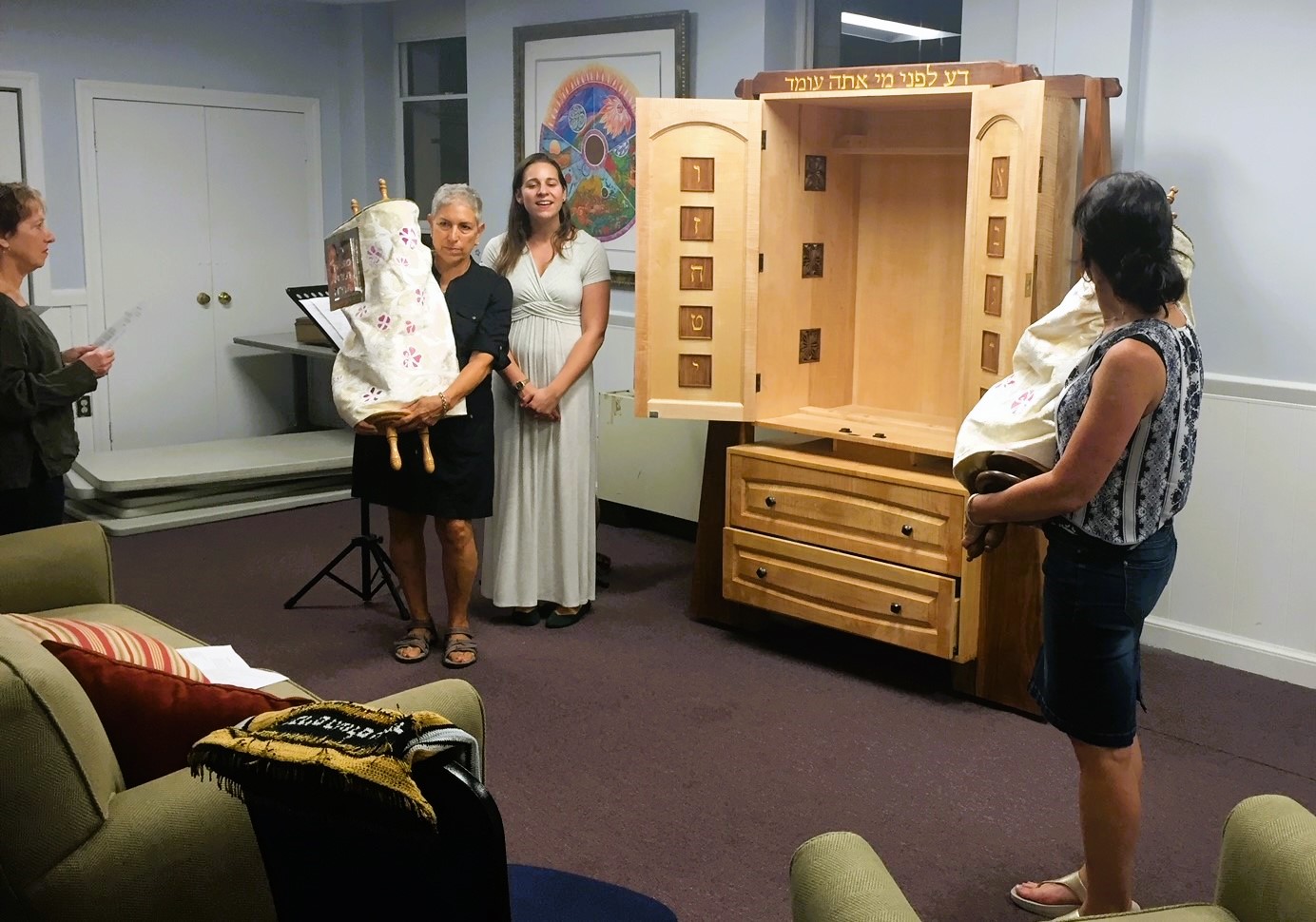A Jewish Community Finds Home in a Church
A Jewish Community Finds Home in a Church
By Dan Holly
The Lutheran Church of the Reformation is an established church in Washington, D.C. that dates back to 1869, but if you visit on a Saturday you might be surprised. Instead of Christian symbols inside, you’ll see an ark holding the Torah. A rabbi will be leading a Shabbat service.
The church has rented out space since 2016 to Hill Havurah, an independent, Jewish community founded in 2001 that had never had a permanent home until it found space in an unusual place – inside the Lutheran Church of the Reformation. It’s a landlord-tenant relationship that has financial benefits to both sides, but it is so much more than that.
Jarrod Jabre, director of operations for Reformation, says that membership has shrunk from its peak and is down to about 400. The building is much larger than the church needs, Jabre said.
“With a building like ours, when you walk through and there’s not somebody making a joyful noise,” Jabre said. “So to be able to have other groups worshiping in the space and utilizing the space for that purpose is fantastic. It keeps the place alive.”
Alan Shusterman, Hill Havurah’s executive director, said the combined congregations produce a synergy that helps both groups. For instance, they combined forces recently on a project to feed immigrants.
“We are both relatively small congregations, so we’re doubling the number on either side,” Shusterman said. “Instead of 300 strong we’re now 600 strong. That changes what we can do.”
The partnership began as a financial arrangement for both sides. Reformation – located on Capitol Hill, near the Supreme Court – can hold as many as 450. “We have space that we do not use, that we cannot use,” Jabre said. The church was not desperate, but church leaders realized that they had space in a prime location that was going to waste, Jabre said.
Meanwhile, Hill Havurah had a growing congregation and, in 2016, appointed its first rabbi. Someone at Hill Havurah knew someone at Reformation and found out they were looking for a tenant and a relationship was born, Shusterman said.
For their part, Hill Havurah gets space at a below-market rate, he said. The congregation not only has offices at Reformation, it also uses the church for its preschool.
Both sides say the joint occupation has required some adjustments. Conflicts are minimized by the fact that Hill Havurah’s services are on Saturdays and Reformation’s are on Sundays. Plus, Hill Havurah’s services are small enough – 40 to 50 people – that they can be held in the church’s St. John’s Room rather than the sanctuary.
At least that’s what the room used to be called; the Saint John’s Room has come to be known as the Shalom Room. Both congregations call it that.
On high holy days, Hill Havurah moves to the church’s sanctuary, which has more space. Reformation leaders remove the crosses from the sanctuary, so Hill Havurah feels comfortable worshiping there. Similarly, Hill Havurah uses a portable ark rather than a built-in model that a typical synagogue would use. When they are not using the Shalom Room for services, the ark is stored in a closet.
Both Shusterman and Jabre said the arrangement has been met with little resistance from their congregation’s members. “I have not heard a single negative word. …Our congregation is enamored with being able to have Hill Havurah here with us,” Jabre said.
Shusterman said the joint occupation has led to a lot of interfaith dialogue, but said it has been mostly at the clergy level. They would like more of that dialogue to filter down to the congregation but “we’re not sure what that looks like,” he said.
But Shusterman said the dialogue has been enriching to him.
“What’s interesting to me,” he said, “is that when you get to know other religions you realize that we’re struggling with the same things…We’re all trying to understand the same big life themes.”
This story is part of Lake Institute’s story collection, the Faithful Generosity Story Shelf, which highlights congregations and other religious organizations who have sought to use their assets and resources in creative—and sometimes surprising—ways as an expression of faithful giving.
Each entry in our Story Shelf is short enough to be read and discussed during a committee meeting or other group gathering. Our hope is that these accessible vignettes will spark new questions, conversation, and imagination among clergy and laity about what might be possible with the funds, buildings, land, and other resources in their care. If you know a story that should be included in the Story Shelf, suggest it here.
Subscribe
Insights, a bi-weekly e-newsletter, is a resource for the religious community and fundraisers of faith-based organizations that provides:
- Reflections on important developments in the field of faith and giving
- Recommended books, studies and articles
- Upcoming Lake Institute events

